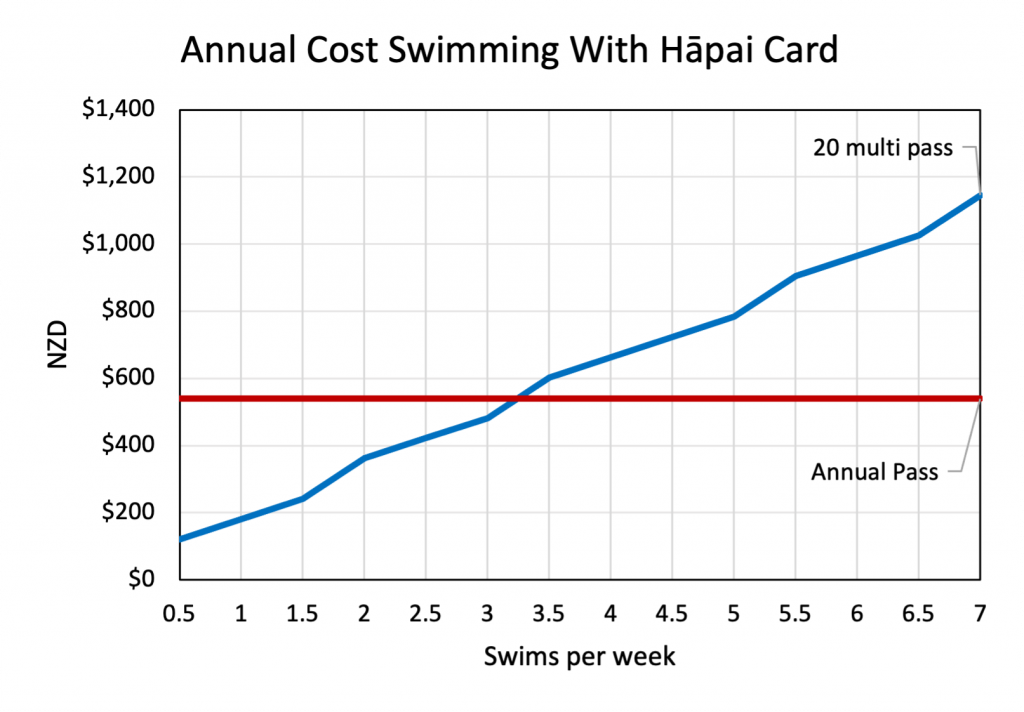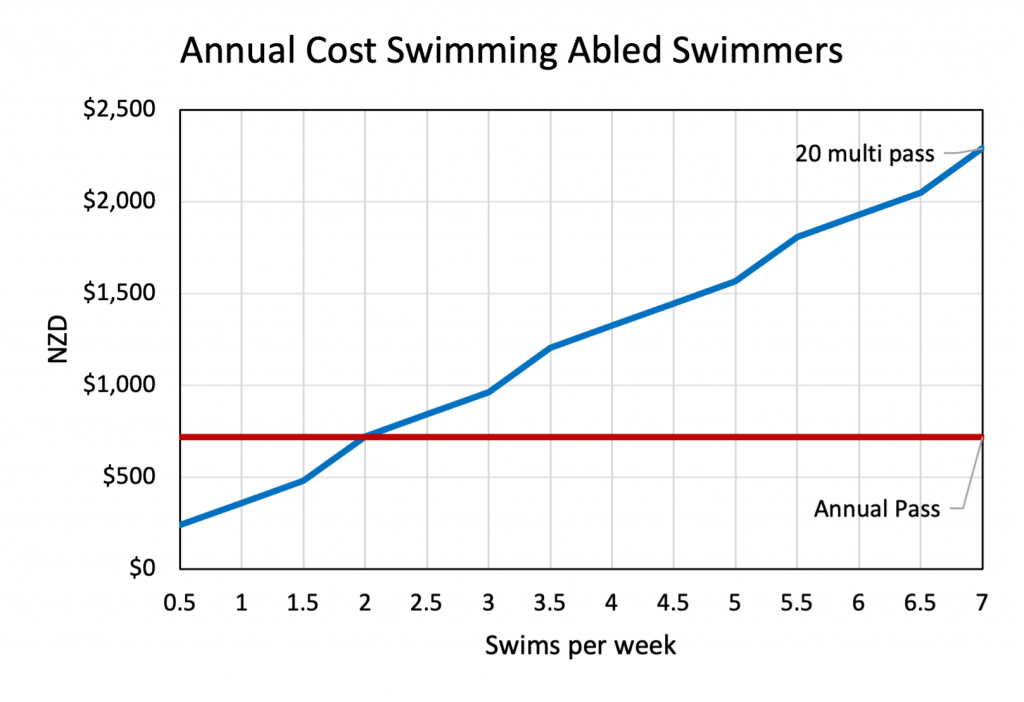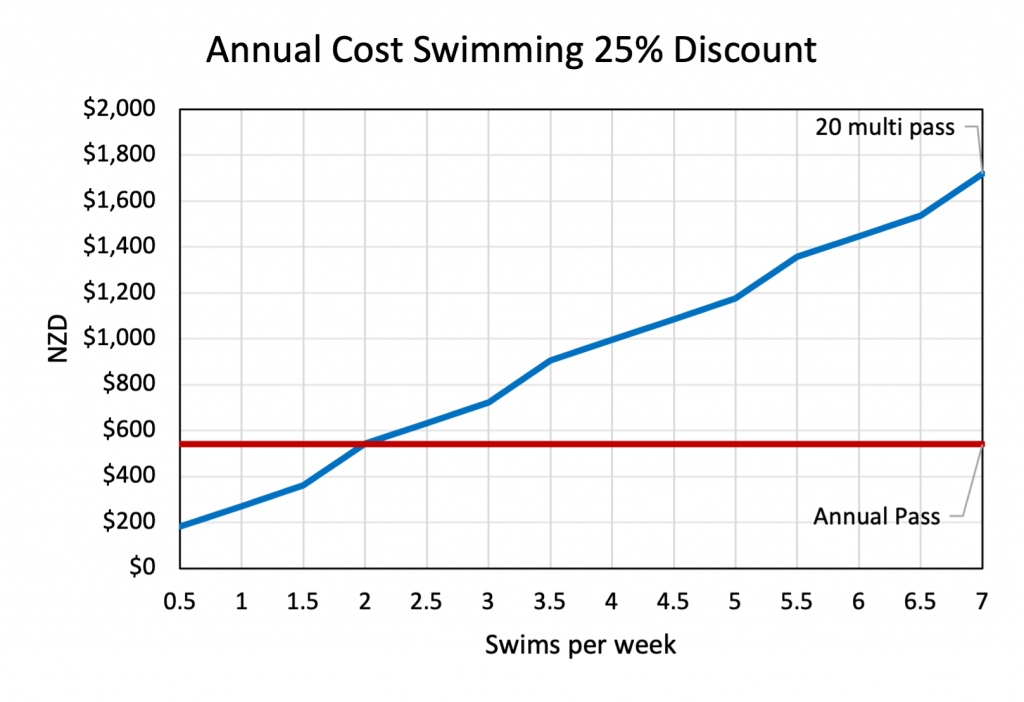The Christchurch City Council changed its fee structure for swimming pool admission as of October 1st, 2022. There are some important changes for disabled swimmers who have a Hāpai Access card.
While there is a 25% discount for annual pool membership, there is a 50% discount for casual entry fees. The later includes multi-visit pass. The question now is, how often do you need to swim per week before the annual membership becomes the cheaper option.

The graph above shows that you need to swim around 3.25 times on average per week before the annual membership becomes cheaper.
While I applaud the Christchurch City Council for increasing the discount for casual fees from 25% to 50%, I would have appreciated it even more if they had extended this discount to the annual membership. Active swimmers will be forced to give up their annual membership if they swim more than three times a week. Normally, discounts are setup so that the more you use a service, the higher the discount becomes.
No other discount category, such as Community Services Card or Super Gold Card, has this inconsistency.
For abled visitors with no discount or visitors with a 25% discount (Community Services Card or Super Gold Card), already visiting the pool more than twice a week justifies an annual pool membership:
It is unclear why the Christchurch City Council wants to make going to the pool for disabled swimmers more of a hassle than for others. Annual memberships is quick an easy. No need to constantly refresh the cards or pay every time at the counter.
It would be great if the CCC would make our live not only more affordable, but also easier.



